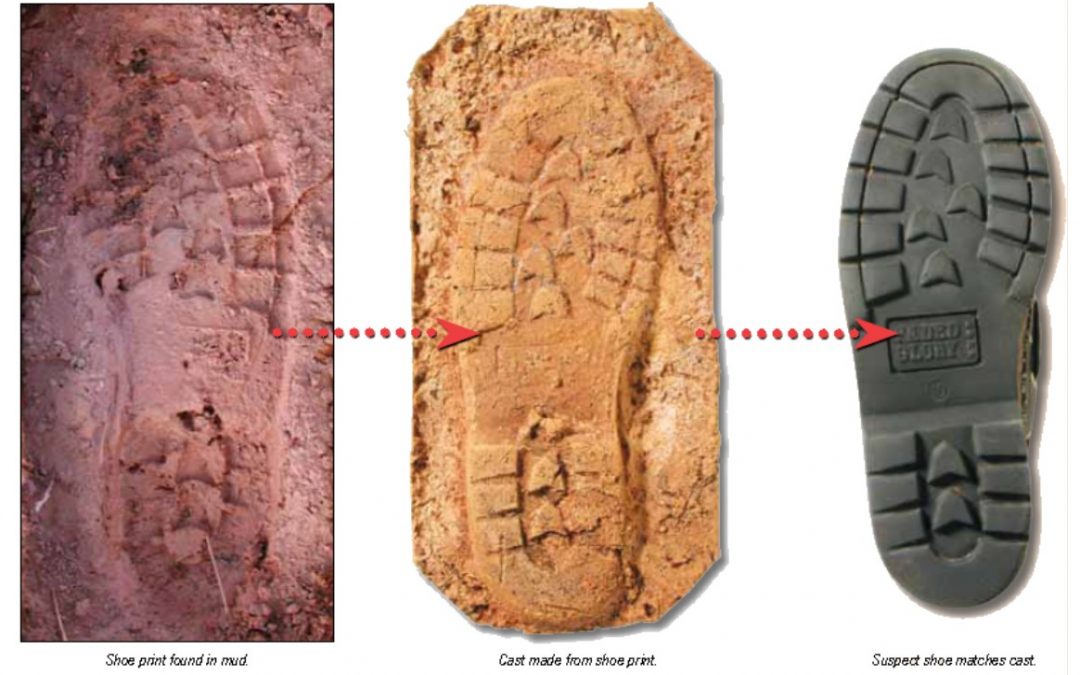Collection and enhancement of footwear impression evidence
Impression evidence is generally transient in nature and hence adequate steps must be taken to ensure efficient collection, documentation and preservation of this evidence. Photographing the impression at the crime scene is one of the most effective methods of documenting the impression in situ, and establishing a permanent record of the impression. Further, if the impression is on a movable surface, the entire surface is collected for further analysis in a laboratory. However, on the contrary, if the impression is located on a surface that is immovable and cannot be removed from the scene, certain techniques are applied for efficient collection of the impression for further analysis. Adhesive lifters and gel lifters can be used for lifting two-dimensional impressions from smooth and textured surfaces, respectively, while electrostatic dust lifters are useful for lifting two-dimensional impressions in dust and on dry surfaces, by means of an electric charge. Three-dimensional impressions require more robust methods for collection, due to the depth of the impression and fragile surface characteristics. To this day, casting these type of impressions is regarded the most suitable method for collection of the evidence. Bodziak (2000) defines casting as, “the filling of a three-dimensional footwear impression with a material that will acquire and retain the characteristics that were left in that impression by the footwear”. Sulphur, plaster of Paris and dental stone, all in a solvent formulation, are some examples of commonly used materials for casting threedimensional footwear impressions. Casting allows effective retrieval of footwear impressions and enables forensic examiners to make comparisons with reference items. After collection of prints from the scene, forensic examiners utilize certain chemical reagents and powders, in an effort to enhance the impression and bring out the minute detailed characteristics of the impression. Luminol, Bluestar®, Leucocrystal Violet, Amido Black and Diaminobenzidine are few examples of reagents used for the purpose of enhancement. The choice of reagent depends largely on the substance from which the impression is formed, the physical and chemical properties of the surface and the preservation techniques. Photographs are taken of the enhanced impressions to maintain a permanent record.

Collection and enhancement of footwear impression evidence


